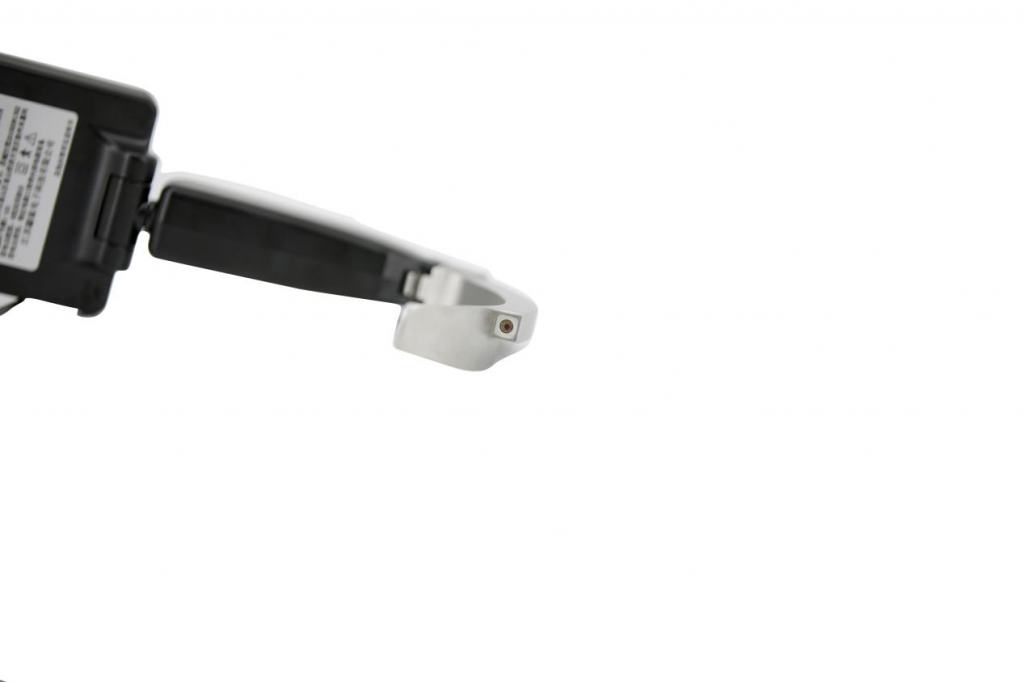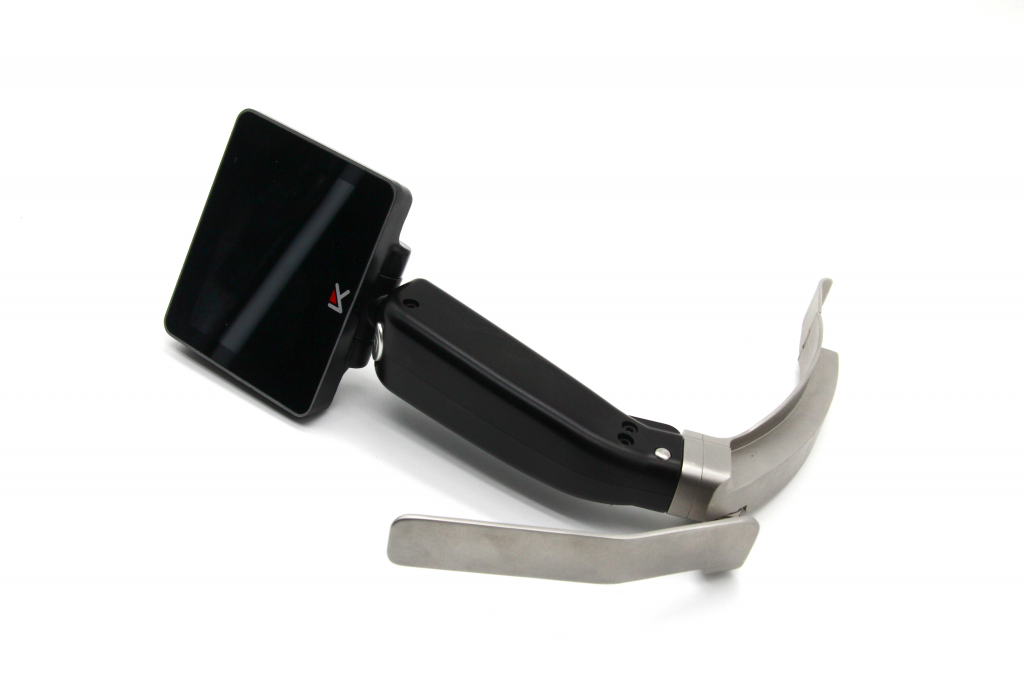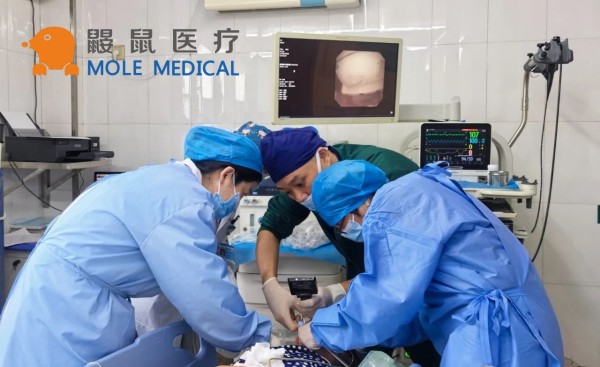Intubation Scopes: Essential Guide for Professionals
Dec 23, 2023
Intubation scopes are a critical tool in airway management and intubation procedures. These medical instruments help healthcare providers secure the endotracheal tube, allowing the patient to breathe or receive mechanical ventilation.
This comprehensive guide will offer valuable insights into different types of intubation scopes, including flexible intubation scopes, video laryngoscope, intubation blade, and tracheal intubation scopes. In this section, we will discuss the role of intubation scopes in safe airway management and efficient intubation procedures.
Key Takeaways:
- Intubation scopes play a vital role in airway management and intubation procedures.
- Different types of intubation scopes, including flexible and tracheal scopes, offer unique benefits and applications.
- Understanding the importance of video laryngoscopes can positively impact intubation success rates.
- Regular maintenance and proper care are essential for optimal functionality and hygiene of intubation scopes.
- Challenges and safety considerations in intubation procedures need to be taken into account to minimize risks and ensure successful outcomes.
Types of Intubation Scopes
Intubation scopes are crucial tools for healthcare professionals when performing airway management and intubation procedures. In this section, we will explore the different types of intubation scopes available in the medical field.
Rigid Scopes
Rigid intubation scopes are known for their inflexible structure, which allows for more control and stability during intubation procedures. However, they are less maneuverable and can cause discomfort for the patient. They are often used in emergency intubation situations and for the intubation of patients with difficult airways.
Flexible Scopes
Flexible intubation scopes are generally more versatile, allowing for easier maneuverability and access to the airway. They are commonly used for intubation procedures that require a non-linear approach, such as bronchoscopies. Flexible scopes also provide greater patient comfort during procedures.
Applications and Benefits
Both rigid and flexible intubation scopes have their own unique applications and benefits. Rigid scopes are ideal for emergency situations and difficult airways, while flexible scopes offer enhanced patient comfort and improved navigability. Healthcare professionals must consider the specific requirements of each intubation procedure and select the most appropriate tool for the task.
Now that we have explored the types of intubation scopes available, in the next section, we will take an in-depth look at endotracheal intubation scopes and their unique features.
Endotracheal Intubation Scopes: An Overview
Endotracheal intubation scopes are specially designed tools used by medical professionals to secure the endotracheal tube, which is inserted into the trachea to maintain an open airway during mechanical ventilation or anesthesia. These scopes feature a slim, flexible design that allows for insertion into the mouth, allowing for easy access to the trachea.
The endotracheal intubation scope consists of several critical components, including a light source, a lens, and a video camera that enables the user to visualize the airway during intubation procedures. The scope is typically equipped with a variety of flexible or rigid blades that aid in navigating the airway and securing the tube in place.
Compared to traditional intubation tools, endotracheal intubation scopes offer a superior level of accuracy and safety, reducing the risk of complications and ensuring successful intubation procedures. These scopes are a crucial part of airway management and are commonly used during general anesthesia, emergency treatment, and critical care scenarios.
The design of endotracheal intubation scopes has evolved significantly in recent years, with advancements in technology leading to more advanced features and increased functionality. Medical professionals must undergo extensive training and practice to use these scopes effectively and must regularly maintain and inspect them to ensure optimal performance and safety.
The Importance of Video Laryngoscopes
Video laryngoscopes have transformed the intubation process by providing better visualization of the airway, resulting in enhanced accuracy and increased intubation success rates. Utilizing an intubation blade with video laryngoscopes allows for clear visualization of the vocal cords, enabling healthcare professionals to manage the airway more effectively and minimize the risk of complications.
Compared to traditional direct laryngoscopy techniques, video laryngoscopes offer better outcomes, especially in patients with difficult airways. The magnified view provided by the camera on the scope allows professionals to visualize any obstructions, thoroughly assess the airway, and expertly navigate the intubation blade towards the trachea.
Moreover, video laryngoscopes reduce the need for neck extension and can be used in various patient positions, making them suitable for a wide range of medical scenarios.
Considering the enhanced precision and safety facilitated by video laryngoscopes, it is essential for healthcare professionals to have the necessary training and skills required to operate them effectively. Additionally, regular maintenance, cleaning, and disinfection of video laryngoscopes are crucial to ensure optimal performance and reduce the risk of infection transmission.
Tracheal Intubation Scopes: Exploring Advancements

Tracheal intubation scopes have come a long way in terms of innovative design and features that provide increased maneuverability, flexibility, and patient comfort during intubation procedures. Modern tracheal intubation scopes offer improved visibility, enhanced durability, and better control, making them an indispensable tool for airway management and intubation.
One such advancement is the incorporation of high-resolution cameras with zooming capabilities, allowing for precise observation of airway structures and easy visualization of the intubation process. Another significant innovation is the use of lightweight materials and ergonomic designs, minimizing the strain on the user’s hands and minimizing the risk of accidental movement during intubation.
Furthermore, advanced tracheal intubation scopes now come equipped with built-in suction channels and ports, facilitating improved suctioning of secretions and better airway clearance. The addition of integrated LED lighting systems offers better illumination and visualization, aiding in challenging intubation scenarios.
The availability of disposable tracheal intubation scopes has also made it easier for healthcare professionals to maintain hygiene levels, eliminate cross-contamination, and save time and effort in cleaning and sterilizing reusable scopes.
With these advancements in tracheal intubation scopes, healthcare professionals can perform intubation procedures with greater accuracy, speed, and safety, leading to better patient outcomes and improved overall quality of care.
Key Components of Intubation Scopes
Intubation scopes are critical tools used in airway management and intubation procedures. To ensure efficacy and precision, it is important to understand their key components. Two essential elements of intubation scopes are the blades and light sources.
Blades
The blade of an intubation scope is the end of the instrument that enters the patient’s airway. Different types of blades are available, each suitable for specific applications. Generally, blades can be curved or straight, with either a Macintosh or Miller design.
The Macintosh blade is designed to lift the epiglottis, allowing for better visualization of the vocal cords. This blade is commonly used in adult patients. The Miller blade is more commonly used in children and patients with smaller airways. It is straight and designed to go directly under the epiglottis, lifting it to view the vocal cords.
Light Sources
Intubation scopes need a light source to illuminate the patient’s airway for proper visualization. Modern scopes usually use LED or fiber-optic light sources that provide bright illumination and excellent color clarity.
The light source is typically located on the handle of the scope, and the brightness can be adjusted to suit the user’s needs. Bright light is essential for providing clear visualization and maintaining precision during the intubation procedure.
Other Key Components
Other important components of intubation scopes include the airway tube, which needs to be flexible and easy to maneuver, as well as the viewing screen, which provides a clear picture of the patient’s airway. Airway management scopes also feature suction capabilities to remove any obstructions and maintain a clear airway during the intubation process.
By understanding the critical components of intubation scopes, healthcare professionals can select the right tool for their intended purpose, ensuring efficient, safe, and precise intubation procedures.
Proper Maintenance and Care of Intubation Scopes
Intubation equipment requires proper maintenance to ensure they remain functional and effective. Regular cleaning, disinfection, and storage are crucial to the longevity of the scopes and maintaining the highest standards of hygiene.
First, carefully disassemble all components of the scope and follow the manufacturer’s instructions for cleaning. Use ethylene oxide or peracetic acid-based disinfectants to disinfect the scope, while avoiding steam or autoclave sterilization, which can damage the delicate components.
When storing the equipment, keep them in a properly ventilated and clean area, away from excessive heat, moisture, and direct sunlight to prevent corrosion or degradation.
Finally, make sure to keep records of the maintenance procedures, such as the date of the last cleaning, disinfection, and repairs, to ensure that they are within the recommended schedule.
Good maintenance practices of airway management scopes are essential to their safe, effective, and hygienic use in medical procedures. By following these best practices, healthcare professionals can extend the lifespan of their intubation equipment and maintain optimal airway management.
Training and Skill Development for Intubation Procedures

Intubation procedures require a high level of skill and expertise. That’s why it’s essential for healthcare professionals to undergo proper training and skill development to enhance their proficiency in using intubation scopes effectively.
Training programs play a crucial role in preparing healthcare professionals for intubation procedures. Hands-on training using intubation instruments and tools is necessary to develop the necessary muscle memory, agility, and accuracy required for safe and successful intubation procedures.
Simulation-based learning offers an excellent opportunity to practice intubation procedures in a controlled, risk-free environment. This method enables healthcare professionals to simulate a broad range of intubation scenarios and develop their skills without risking patient safety.
Ongoing education and practice are essential to enhance proficiency and ensure that healthcare professionals remain up-to-date with the latest best practices and advancements in intubation scopes. Healthcare facilities should provide regular refresher courses for their staff, ensuring they are continually improving their skills and knowledge.
By investing in proper training and skill development, healthcare professionals can provide optimal patient care by using intubation tools effectively and efficiently.
Challenges and Safety Considerations in Intubation
Intubation procedures using scopes are vital but come with potential risks and inherent challenges for healthcare professionals. Some of the common complications during intubation include but are not limited to patient distress, laryngospasm, and airway injuries.
It is crucial to ensure that the appropriate intubation instruments, equipment, and airway management scopes are used to mitigate these risks and complications. Additionally, healthcare professionals should observe comprehensive safety measures during the intubation procedure.
The use of video laryngoscopes can improve visualization and accuracy and help reduce the risk of complications. Regular maintenance of the intubation equipment, especially the blades, is essential to ensure hygiene and optimal functionality. Staff training and skill development programs can also equip healthcare professionals with the necessary knowledge to perform intubation procedures effectively and safely.
Safety Strategies during Intubation Using Scopes

Here are some practical strategies to mitigate risks and enhance safety during the intubation procedure:
- Ensure adequate preparation and assessment of the patient before intubation, including preoxygenation, assessment of airway anatomy, and exclusion of potential contraindications.
- Appropriate selection of intubation equipment and airway management scopes specific to the patient’s needs and intubation scenario.
- Use video laryngoscopes to enhance accuracy and improve visualization during the procedure.
- Apply pressure on the cricoid cartilage to reduce the risk of passive regurgitation during the intubation procedure.
- Continuous monitoring of the patient’s vital signs and airway status throughout the procedure.
- Immediate management of any complications or emergency situations that may arise during the procedure, including retrieving misplaced endotracheal tubes, managing hypoxia, and managing bleeding.
In conclusion, healthcare professionals must be aware of the potential risks and challenges associated with intubation using scopes. By using appropriate instruments, equipment, and scopes, adhering to safety strategies, and improving their skills through training, they can perform intubation procedures safely and improve patient outcomes.
Research and Advancements in Intubation Scopes
Intubation scopes have come a long way in recent years, thanks to ongoing advancements in technology and research. Today, these instruments are more accurate, efficient, and sophisticated than ever before, enabling healthcare professionals to perform intubation procedures with greater ease and precision.
One notable advancement in intubation tools is the development of specialty blades that make it easier to view and navigate the airway during procedures. We’re also seeing advancements in the design of flexible intubation scopes, which are becoming increasingly adaptable and customizable to meet the unique needs of patients.
Another area of research in intubation scopes is the development of video laryngoscopes. These tools are equipped with cameras that provide a better view of the airway, making it easier to guide the endotracheal tube into the right position. Recent studies have shown that the use of video laryngoscopes can significantly improve success rates during intubation procedures, particularly in challenging cases.
Overall, ongoing research and development in the field of intubation scopes are transforming the way we approach airway management and intubation procedures. As technology continues to advance, we can expect to see even more sophisticated tools and techniques emerging on the horizon, further enhancing patient outcomes and improving the standard of care.
Conclusion
As we conclude this essential guide, it is evident that intubation scopes play a crucial role in airway management and intubation procedures. With the right knowledge and understanding of the different types of scopes, components, maintenance practices, and safety considerations, healthcare professionals can ensure they provide high-quality patient care.
Training and ongoing education are essential for developing the necessary skills and expertise in using intubation scopes effectively. By staying up-to-date with the latest research and advancements in the field, we can continue to improve patient outcomes and enhance the overall efficacy of intubation procedures.
As the medical field continues to evolve, we can expect further innovations in intubation scopes and related technology. It is vital to remain informed about these developments and to incorporate them into our practice to deliver optimal patient care.
Thank you for reading this comprehensive guide on intubation scope. We hope it has provided valuable insights and information for healthcare professionals. Remember, when it comes to intubation, precision, and safety should always come first.
Categories
Latest Articles

Disposable Nephroscopes: Redefining Safety & Efficiency in Urology
Introduction The shift towards minimally invasive urological surgery has found a pivotal ally: the disposable nephroscope. As traditional reusable scopes grapple with persistent biofilm contamination risks and soaring sterilization costs, the global medical community is rapidly adopting single-use solutions. This article analyzes the clinical value, technological evolution, and dynamic innovation landscape driving this transformative shift. ... Read more

Disposable Video Laryngoscope Blades: The Ultimate Solution for Preventing Cross-Contamination
In the operating room, as the cold light of a video laryngoscope illuminates a patient’s airway, an age-old medical challenge is being redefined: How can life-saving instruments avoid becoming vectors of infection? Jiangsu MoleMedical drives an innovative safety revolution—replacing reusable devices with single-use, sterile laryngoscope blades that create a pure barrier for critical airways. Traditional video ... Read more
-2.jpg)
FDA & CE Approved Video Laryngoscope: What Makes It Stand Out?
Introduction In high-pressure emergencies and precision-driven operating rooms, video laryngoscopy is revolutionizing airway management. Mole Medical’s FDA and CE-certified technology replaces tactile-dependent “blind intubation” with real-time visual navigation – enhancing safety, accuracy, and clinical outcomes worldwide. Why Certification Matters Mole Medical’s dual certifications validate its global compliance and performance: FDA Clearance: Rigorous validation of safety/efficacy ... Read more

Mole Medical Showcases Advanced Endoscopy Solutions at CMEF Autumn 2025, Driving Global Partnerships
Guangzhou, China – September 26-29, 2025 – The 92nd China International Medical Equipment Fair (CMEF Autumn) concluded successfully on September 29th at the Canton Fair Complex in Guangzhou. Mole Medical Technology Co., Ltd. (Mole Medical) made a significant impact at the event, drawing global medical professionals and partners to its booth (Hall 2.1, Stand Q24) ... Read more

How to Use Disposable Ureteroscopes Safely and Efficiently
In the field of urology, the application of disposable electronic ureteral-kidney pelvis endoscopy catheters is leading the technological innovation in minimally invasive surgeries. According to the 2024 multi-center research data from China’s urology department, among the over 5,000 surgeries included, the patient group using disposable catheters performed significantly better in key indicators such as operation ... Read more



